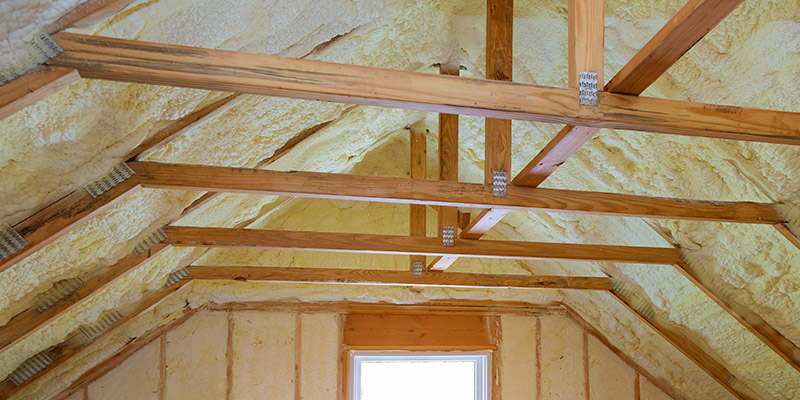
What is Spray Foam Insulation? – What you need to know
Spray foam insulation became prevalent in the 1970s, taking the marketing by storm as it outranked and was far superior to its competition, fibreglass and cellulose. However, it wasn’t until the last 30 years or so that newer technologies and innovation began to steer spray foam insulation to success, it rapidly became introduced into homes and commercial properties, although it was traditionally known for aircraft insulation. Spray foam insulation revitalised the insulation market due to its immediate and long-term benefits, its success was paramount, and its increase usage was no surprise. One of its overriding factors is its success to fit in with and combine with other, more traditional, forms of insulation. The application is quick and easy. However, we must address what actually is spray foam insulation? What types are there? What are the benefits of it?
What is Spray Foam Insulation?
This two-part liquid insulation is typically sprayed on a property through the use of a spraying agent, such as a gun. It can be blown into walls, ceilings, crevices, onto slabs and all types of surfaces, covering all nooks and crannies. The product consists of a liquid the rapidly expands into foam, expanding up to 100x times its size, depending on the type of foam insulation used. The material is delivered through eco-friendly drums which, at Eco Spray Foam Systems, we freely allow people to take them once emptied in which they are turned into quirk furniture and more. Spray foam insulation is presented in two different forms, Open Cell spray foam and Closed Cell spray foam, each with its own benefits and specific usage. So what is open cell and closed cell spray foam insulation?
Types of Spray Foam Insulation
Depending on your property, commercial or residential, different forms of insulation may be used to insulate. Moreover, it may be best practice to use a combination of both forms of foam insulation to properly insulate your property to its maximum potential. For example, closed cell insulation provide greater containment of heat, whereas, open cell insulation is far superior in soundproofing, therefore, depending on the area in need of insulation, different forms of foam insulation may be applied.
1) Open Cell Insulation:
Open-cell foam cells are not as dense as closed-cell foam cells and are filled with air, giving the insulator a spongey feel. Due to its open nature, this form is porous, which allows water and air to surpass it and penetrate the insulation. However, the selling point of this form of insulation is down to its open-cell composition because it allows breathability of structured wood and it is, approximately, twice as effective as a sound-barrier, compared to closed-cell insulation. Additionally, due to its lighter composition, it is more expansive, allowing superior insulation for the smallest of gaps and crevices. This form is also an inexpensive version of foam insulation, due to its reduced R-value.
2) Closed Cell Insulation:
Closed-cell insulation is the stronger, thicker and bolder brother to open-cell. It has an incredible R-value, which retains heat in your property, providing the perfect warm atmosphere for those cold winter nights, or to keep your commercial properties warm. Additionally, closed-cell spray foam doesn’t allow the passing of water and is recognised as a flood resistant material by FEMA. Not only does it no allow water through but it also doesn’t retain it, preventing mould growth and deterioration. There condensed and closed-structured cellular composition makes it a great insulator for warehouses, containers and homes, when they’re in need of warmth, especially as it helps reduce the usage of heating, saving you money at the same time.
Environmental Benefits
As previously mentioned, with the use of foam insulation you are essentially conserving the warmth to your property, not allowing much heat to escape. This case is especially true when using closed-cell insulation, due to its superior R-value and dense cells. By reducing the need for heating appliances, you are, in turn, reducing your carbon footprint by reducing the emissions you let off. Moreover, the interior air quality of your property will also be superior, through preventing mould growth, the passing of dust, dirt and pollutants, your indoor air will be much cleaner. This blown insulation is 100% water-blown and contains zero harmful gases. Traditionally, insulations had non-green and non-sustainable application methods, therefore, spray foam insulation has revolutionised the sustainability factor of insulating.
If you want to learn more about insulation or if you wish to have this product in your home or commercial property, then contact us at info@sprayfoam.co.uk or visit www.sprayfoam.co.uk to learn more. We are certified Icynene spray foam insulators and have a great reputation across the United Kingdom, find us on Checkatrade here: https://www.checkatrade.com/trades/EcoSprayFoamSystems/


